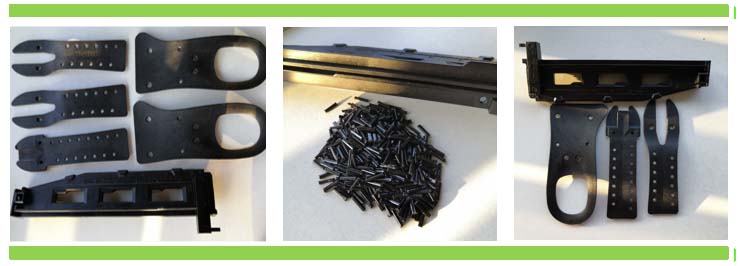
TPU carbon fiber composite made of mechanical arm, robotic arm is one of the main components to perform operation tasks, widely used in industrial manufacturing, medical, civil, military, transportation logistics and space exploration and other fields.At present, more and more mechanical arms on the market began to be made of TPU carbon fiber composite materials, why?
First: light weight, low energy consumption, high production efficiency
The lighter the arm, the smaller the inertia of motion.Lightweight design can optimize the power-to-weight ratio of the manipulator, and the use of TPU LCF material is one of the important ways to achieve lightweight of the manipulator.TPU carbon fibre composites are only a third as dense as steel and about 30% lighter than aluminium, which means machines use less energy to run and are lighter and faster.
Second: the strength is large, the function is diversified, the bearing capacity is much
The basic weight to be borne by the mechanical arm includes its own weight and the maximum weight to be grabbed. The strength and modulus of TPU LCF composites are higher than that of steel, and the tensile strength is generally more than 3500MPA, which is 7~9 times that of steel.Our factory has cooperated with an American customer who has made a mechanical arm with a wall thickness of 6mm and a diameter of 20cm with TPU LCF, which can indeed carry instruments and equipment up to more than 100 kilograms.This high load-bearing capacity makes it possible to diversify.
|
Product name
|
LFT TPU long carbon fiber composite materials to make robot arms
|
|
Color
|
Natural & black & discuss
|
|
Material
|
TPU long carbon fiber black reinforced thermoplastic
|
|
Packing
|
25kg/bag
|
|
Deliver time
|
3-15 days
|
|
Port
|
Xiamen Fujian or discuss
|


Contracts me:Lucy
Contracts email:sale04@lfrtplastic.com & sale02@lfrtplastic.com
Contracts wechat/whatsapp/skype:+86 135 5009 5727
Web:www.lft-g.com
Factory Add:Building B, No. 55, Hongxi South Road, Torch High-tech Zone,Xiang'an District,Xiamen,Fujian, China


